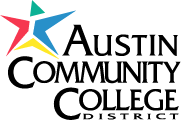Text links are one of the most basic elements of web design. Here at ACC there are some tips and best practices to follow as you maintain your content.
Creating links in the main website using Drupal
Linking to other ACC webpages
Using the TinyMCE editor within Drupal, highlight the text you wish to be linked
Click on the small “chain” icon.
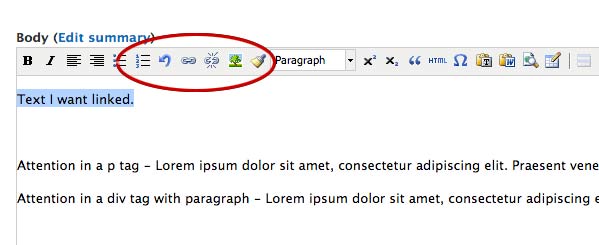
Highlighted text within Drupal
Fill in the Insert/Edit Link dialog boxes
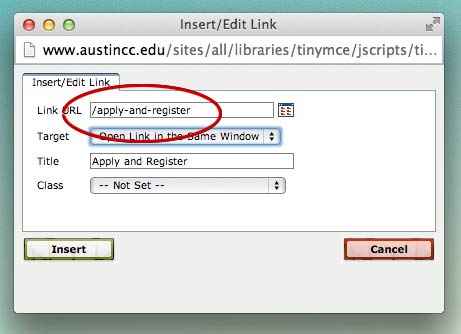
TinyMCE editor within Drupal
Important
If you are editing an ACC webpage in the main website using Drupal:
Linking to other ACC webpages:
- Do not include “http://www.austincc.edu” in the URL. Use only a beginning slash “/“.
- This tells the browser to go to the root of our website (our homepage) and then find the corresponding page. This is a preventive measure and helps system administers down the road for a variety of reasons.
- Open the link in the same window.
Linking to non-ACC webpages, or ACC webpages that do not have a “www”in the URL:
- Do include the full path URL.ex: https://sites.google.com/a/austincc.edu/dhaley/
- Open the link in a new window/tab
- Disregard the “class” pull down menu and file picker.
Be sure to fill in the “title” field
Creating links using WordPress
Using the TinyMCE editor within WordPress, highlight the text you wish to be linked
Click on the small “chain” icon.
WordPress Chain Icon
Linking to other pages in your WordPress website:
Select the page of your website, if available in the “Existing Content” dialog box.
Click “Add Link”
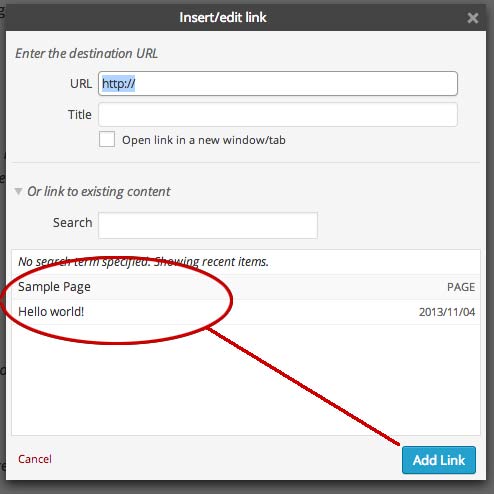
Link to existing content
Linking to other ACC webpages:
- Do include “http://www.austincc.edu” in the URL.
- Since WordPress resides on a different server we need to tell the browser exactly where to go.
- Open the link in the same window.
Linking to non-ACC webpages, or ACC webpages that do not have a “www”in the URL:
- Do include the full path URL.ex: https://sites.google.com/a/austincc.edu/dhaley/
- Open the link in a new window/tab
Be sure to fill in the “title” field
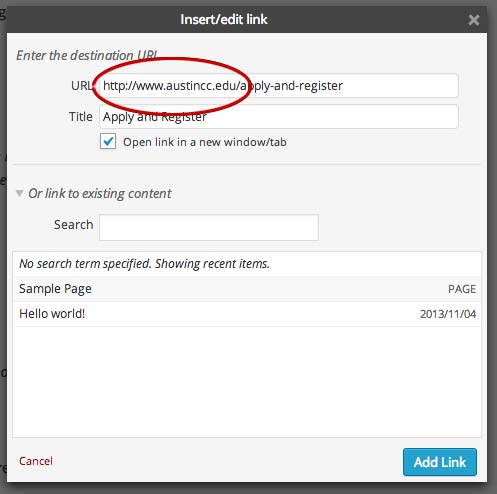
Add full path URL
Best Practices
- Do not link full path URLS. Instead link descriptive text. this helps with accessibility and maintenance.
Example:
Good: Student Online Services
Bad: Student Online Services – Click here: https://onlineserv.austincc.edu/WebAdvisor/WebAdvisor?TOKENIDX=1695311752&type=M&constituency=WBST&pid=CORE-WBST
- Do not use “Click here”. Ever.
- Do not link Headings
- Do not link paragraphs of text, rather just the text that describes the link.
Example:
Good: Monitor ACCmail and Online Services regularly in case issues arise with your registration.
Never link to vanity URL’s within Drupal or WordPress.
Back to Top